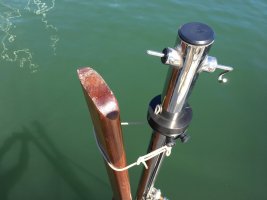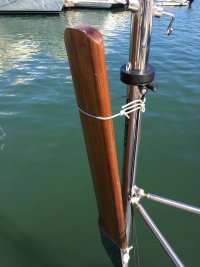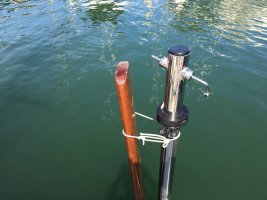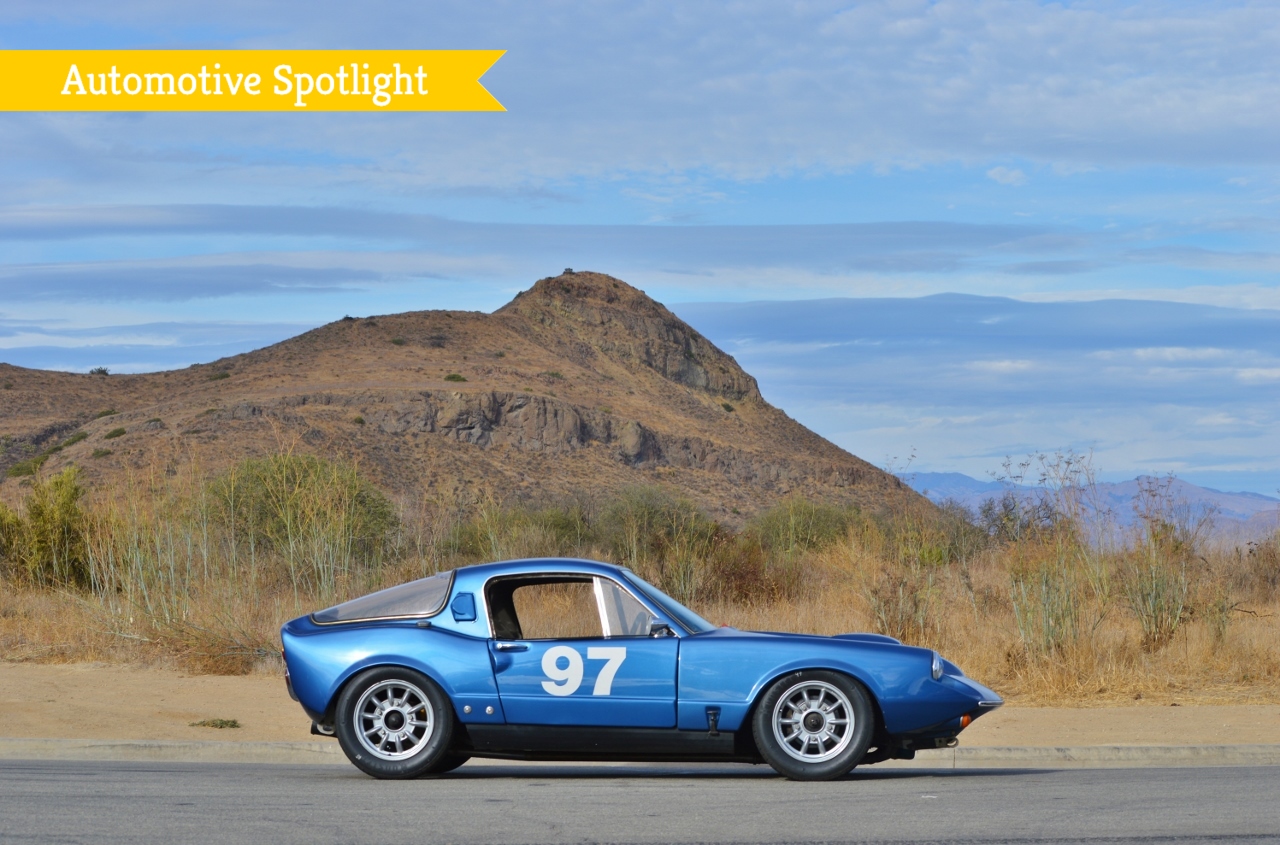I'm completing the Cape Horn vane installation, and find the pendulum oar oddly clutzy looking. But I may be wrong.
In the photos it's in the storage position, not hanging vertically in the water slipstream. The oar functions by rotating in the water when turned on its vertical axis. The force of the passing water thrusts it off centerline, and that force is used to steer the boat by lines to the ship's rudder.
Most daggerboards or rudders are not as high-aspect ratio as such an oar, so maybe the extreme camber of the leading edge is necessary. The foil always stalls anyhow, it just gets shoved aside like a barn door, more simple deflection than lift.
But how about that blunt cutoff at the tip? Dinghy rudders are tapered, and so is the wingtip of a Spitfire. Yet many trainer airplanes have blunt wingtips, as if it didn't really matter at low speeds (Wing tip vortices have been much studied, just not by me).
Just wondering if anyone with an interest in NACA sections has an opinion. I could easily reshape this chunk of mahogany to look more like what I'm used to--which might not be smart. The Sailomat foil was certainly not as thick and much more graceful.
 ...
... ...
...
(Yes, I'll report on the installation soon. Had one test sail, and it works OK. Took about a month to get this far).
In the photos it's in the storage position, not hanging vertically in the water slipstream. The oar functions by rotating in the water when turned on its vertical axis. The force of the passing water thrusts it off centerline, and that force is used to steer the boat by lines to the ship's rudder.
Most daggerboards or rudders are not as high-aspect ratio as such an oar, so maybe the extreme camber of the leading edge is necessary. The foil always stalls anyhow, it just gets shoved aside like a barn door, more simple deflection than lift.
But how about that blunt cutoff at the tip? Dinghy rudders are tapered, and so is the wingtip of a Spitfire. Yet many trainer airplanes have blunt wingtips, as if it didn't really matter at low speeds (Wing tip vortices have been much studied, just not by me).
Just wondering if anyone with an interest in NACA sections has an opinion. I could easily reshape this chunk of mahogany to look more like what I'm used to--which might not be smart. The Sailomat foil was certainly not as thick and much more graceful.
 ...
... ...
...
(Yes, I'll report on the installation soon. Had one test sail, and it works OK. Took about a month to get this far).
Last edited:



